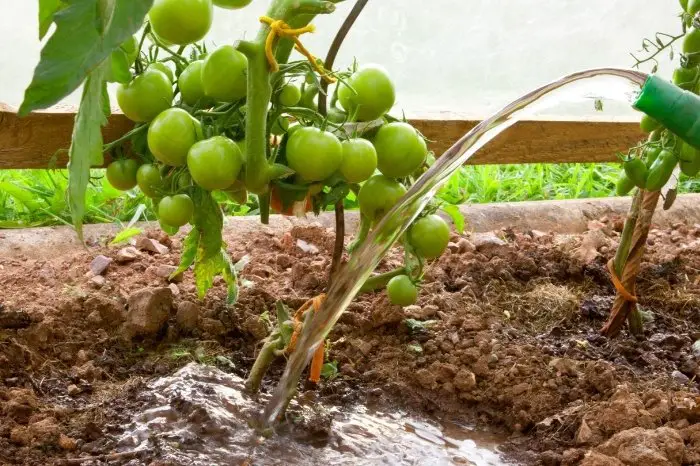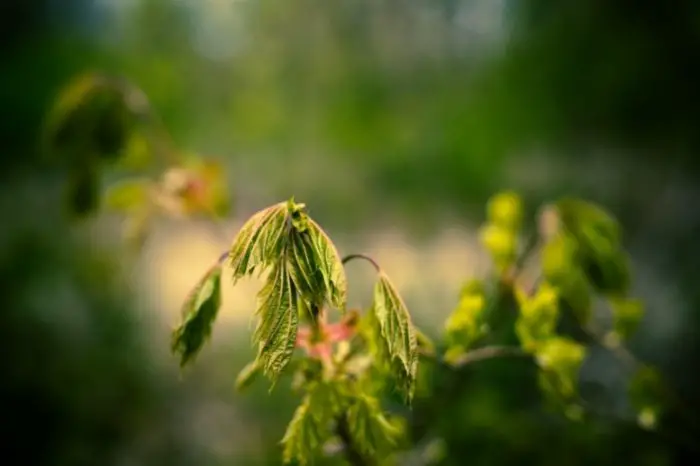Last Updated on March 18, 2022
Wilting tomato plants in pots are one common issue faced when growing tomatoes in containers. Wilting occurs in tomatoes for different reasons. Sometimes, it may not be something serious if you act fast to mitigate the problem. However, it may also mean something serious like infectious diseases.
Once you begin to notice wilting leaves and wilting stems on your tomato plant, it shows there’s a problem that needs to be fixed as on as possible. The most common reasons for tomato wilting can be due to hot temperatures which usually cause under-watering. Or it may be because of shock from transplanting.
Whatever the case may be regarding wilting tomatoes in pots or outdoor gardens, it may be possible to revive your plant if you do the right thing.
We will be looking into wilting tomato plants in pots and give you some possible solutions to resolving the issue. So, let’s begin.
Common Reasons For Wilting Tomato In Pots
Wilting tomato plants in pots is characterized by drooping leaves and makes the tomato plant lose its shape. Let us further look into the details of wilting tomatoes in pots. So, here are the common reasons why your tomato plant may be wilting in your containers.
1. Lack Of Water Or Under-Watering
When your potted tomato plant isn’t watered sufficiently especially during the hot days, it can cause wilting of leaves as well as stems. This wilting can be temporary which causes the leaves and stems to lose water faster than they can replenish it.
Sometimes when this happens, they may recover in the evening and it may not require extra watering. However, if the wilted potted tomato refuses to be revived after the weather cools down in the evening, they will need watering.
Read more about When To Pick Artichokes
2. Over-Watering
Apart from lack of water in your potted tomato plant, over-watering that leads to soggy plants can cause wilting. When the plant is soaked in excess water, the roots get drowned and cause the plant to be unable to absorb water from the soil. Hence, leading to wilting of the plant.
This is why you need to monitor your potted tomato plant, especially during the rainy season or heavy downpours. Don’t supply excess water during rainy seasons if your potted tomato is outdoors. Or you can simply take your potted tomato plant indoors to avoid over-watering from heavy downpours.
If your potted tomato is suffering from overwatering, then it’s possible for it to recover. Simply cease watering the plant and only water when you notice at least 2 inch soil into the soil is dry.
A quick guide to watering your tomato plant appropriately is to roughly provide 1 inch of water every week.

3. Drainage Holes
Drainage holes are very crucial when it comes to potted plants generally. If the drainage holes you have for your potted tomatoes aren’t enough, it may cause your plant to get clogged due to the inadequate flow of water whenever you water your plant.
Therefore, make sure you have enough drainage holes in your potted tomato plants to allow an easy flow or passage of water.
Check Out Top 10 Best Cross-Pollinating Vegetables
4. Transplanting To Bigger Pots
When you improperly transplant tomato plants into another pot or even into your garden, it may cause shock and damage the root of your plant. Then this can lead to the wilting of your plant.
Ensure you don’t tear or cut the tomato plant roots in the process of transplanting and ensure you don’t over-water them.
Additionally, when you are transitioning your tomato (especially the seedlings) outdoors in a sunny area, use any opaque materials during the hottest periods. This is because your plant will need to readjust to the environment so this will help harden them off.
5. Type Of Soil Used – Wilting Tomato Plants In Pots
If you’re using loose soil such as sandy soil for your potted tomato, it will require you to water more especially during hot seasons. Sandy soil loses water too quickly so they aren’t so great with water retention.
So, it is ideal you water your potted plant accordingly when using loose soil such as sandy soil.
6. Soil-borne Disease Caused By Wilting
Fungal diseases that are soil-borne can also cause your potted tomato to wilt. Fusarium and verticillium wilt are the two most common soil-borne diseases that can lead to wilting of tomatoes.
When your tomato plant is infected with these diseases, it begins to wilt especially during the day. Then at night, your tomato plant can recover. The fruits of your tomato plant may even yield fruit, but it usually results in smaller or fewer yields. This wilting can slowly become worse and even lead to the death of the plant.
You can further verify Fusarium and Verticillium infection if you cut the affected stem open. You should see a brown to black discoloration of the vascular system of the stem instead of a healthy stem that only has a shade of green.
The best solution is to burn or discard the infected plant. Then you should plant your tomato in a new container and soil and avoid composting the infected plant.
To further protect your potted tomato from Fusarium and Verticillium, we recommend you go for tomato varieties that are resistant to these diseases.
My Tomato Plants Are Wilting In Pots Even When Soil Is Wet: What Are The Reasons?
We have an understating that potted tomato plants need to be moist so they can thrive well. However, if your tomato plant is wilting even when your soil is wet then it may mean that you have over-watered your plant. Over-watering can cause your potted tomato to wilt.
Also, if your potted tomato plant doesn’t have good drainage holes, it can clog the flow of water when you water your plant thereby causing wilting as we have mentioned above.

Final Say On Wilting Tomato Plants In Pots
Wilting tomato plants in pots can be a worrisome thing when this situation arises. But if you can determine the cause of wilting, it may be possible to revive your plant.
FAQ’s
How do you revive a wilted tomato plant?
You can revive a wilted tomato plant by first determining the cause of the wilting issue. Once, you’ve confirmed the cause, then you can now take steps to mitigate the situation. For instance, if your tomato is wilted by under-watering or over-watering, simply stop watering or water more when needed.
How often should I water my tomato plants in pots?
Some things will determine how you water your potted tomato plant. For instance, if your potted plant is in a protected place where it can’t get water from rain, then you will need to dedicate some time to water them. During hot seasons, your plant will need more watering. But always check how dry or moist your soil is to further determine when to water them.
Why are my tomato plants wilting after planting in pots?
Your tomato may be wilting after planting in pots if you just transferred them to another pot. This transfer can cause shock especially when you cut or tear part of the root before transplanting it to another pot.

Eunice is an enthusiastic gardener with a passion for growing beautiful flowers. She loves nothing more than spending time in her garden, tending to her plants and enjoying the outdoors. Eunice has been gardening for over 15 years and has developed a unique style of landscaping that is both practical and aesthetically pleasing. She is especially fond of growing roses and enjoys experimenting with different varieties and colors. Eunice takes great pride in her garden and often shares the fruits of her labor with friends and family. In her spare time, she enjoys reading gardening magazines and attending local horticulture events. Eunice is passionate about her hobby and is always eager to share her knowledge and experience with others.

